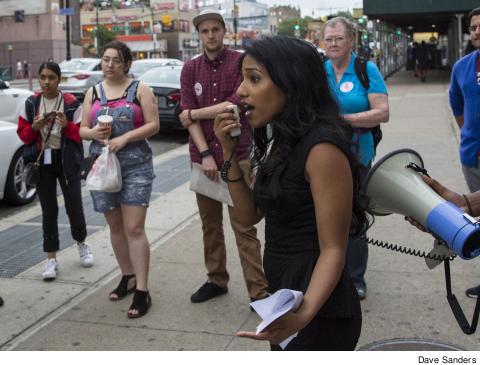Must address funding
 |
For the past two decades, the average number of full-time faculty members per student at SUNY has increased while it has steadily decreased at CUNY, a new CUNY University Faculty Senate study shows. However, faculty-student ratios vary dramatically from one campus to another within each system.
The findings, released in May by the senate’s Budget Advisory Committee, highlight the disparate states of the two systems – one, SUNY, being mostly located throughout the state and serving middle-class students while the other, CUNY, is an urban university serving mostly the working class and communities of color.
THE COLD NUMBERS
In 2003, the report said, both SUNY and CUNY maintained 43 full-time faculty members per 1,000 full-time equivalent (FTE) students. By 2017 that number at SUNY slightly increased to 45, while at CUNY it dipped to 35. The study excludes two-year campuses, which in New York City are funded by the city rather than the state, and specialized graduate schools.
“The difference in full-time faculty access for senior college students is important,” the report said. “For example, assuming a hypothetical campus of 10,000 full-time equivalent students at the fall 2017 rates, a SUNY campus would have 450 full-time faculty members and a CUNY campus would have 350, a difference of 100 faculty members. Adding 100 faculty members to a 10,000 FTE CUNY campus would yield 600 additional course sections taught by full-time faculty members who are available on a full-time basis for student advising and mentoring, office-hour assistance with coursework and engagement with students in research and student service activities.”
It continued, “Overall, to bring all of the CUNY senior college campuses up to the SUNY average of 45 faculty members per 1,000 full-time equivalent students would require 1,299 additional faculty members.”
The disparity is also highly racialized, the report noted. In 2017, between both SUNY and CUNY, there were 42.4 full-time faculty per 1,000 FTE students among white students, while that number was 37 for black students and 37.3 for Latinx students.
ENROLLMENT UP
Stephen Brier, a professor of urban education at the Graduate Center, echoed an explanation for the inequality in the faculty-to-student ratio made in the report. “CUNY’s enrollment has gone up and SUNY’s has stayed fairly stable, and our full-time faculty has not gone up with our enrollment,” he told Clarion.
Because CUNY has more students who are eligible for TAP, it is disproportionately affected by the increasing “TAP gap” – the difference between the tuition assistance that the state provides and the actual tuition rate. That difference comes out of CUNY and SUNY’s existing budget. This funding shortfall has made CUNY fall further behind in faculty hiring even as student enrollment has increased.
STATE OBLIGATION
For Brier, this inaction marks a betrayal of an unstated understanding that the state has an obligation to treat the two university systems equally. “Our two systems should be funded in lockstep. That’s been the operating procedure since 1979, since the state took over the senior colleges.”
Smitha Varghese, the legislative chair of the University Student Senate and a senior majoring in psychology at Queens College, told Clarion that while both systems deserve adequate funding, it is CUNY that “has been shortchanged for years.
“It’s just been frustrating to see that the system with fewer students of color gets more resources allocated to them,” she said.
This is the case at both SUNY and CUNY campuses. Indeed, the report recommends addressing the inequality by increasing funding at all CUNY and SUNY campuses that are below the prevailing SUNY ratio of 45 faculty per 1,000 FTE students.
“The new faculty positions should be funded over a period of several years to permit orderly recruiting and faculty development,” the report said. “The funding should be accompanied by funds to close the TAP Gap, which erodes campus capacity to fund faculty lines. The funds should be allocated to SUNY and CUNY to their senior colleges based on policies that also address disparity between their senior colleges considering overall enrollments, levels of instruction and also with respect to race and ethnicity.”
The report also supports a longstanding PSC demand for recruiting, hiring and retention practices that will achieve a more diverse faculty, including career opportunities for part-time faculty. PSC has fought during each legislative session to pressure lawmakers into ending the decades-long underfunding of CUNY and to increase state aid to CUNY.
Brier noted that making that change happen is going to require an existential change in thinking in Albany, where funding for public higher education would be given the same amount of focus and attention as hot-button items like K-12 education.
“We’re not on the list of legislative priorities,” he said of CUNY. “It’s a disappointment.”

